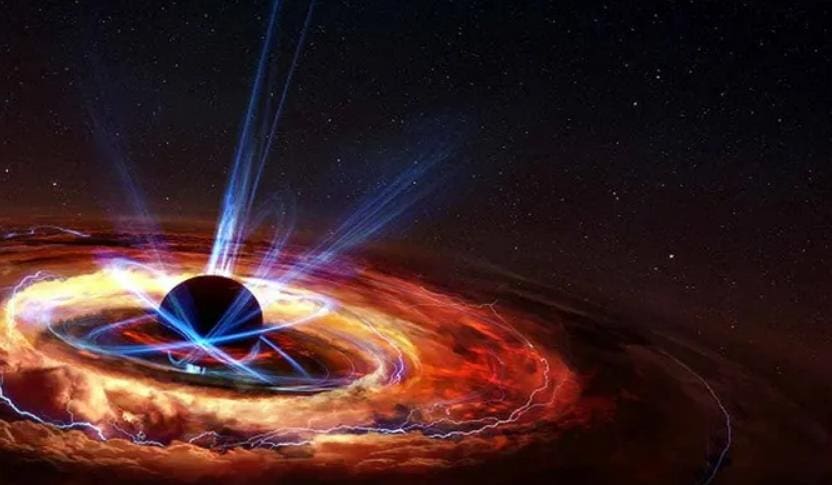Black holes remain one of the most mysterious phenomena in the universe. But a new study suggests that black holes could be used as a source of energy.
The gravitational pull of black holes is so strong that nothing (not even light) can escape their gravity. So can we use the enormous power of black holes as a source of energy? According to a study, the answer is yes. Scientists believe that one day it will be possible to use the rotational and gravitational properties of black holes to generate energy from them.
“We know that we can extract energy from black holes, and we also know that we can inject energy into them, which sounds almost like a battery,” study lead author Zhan Feng Mai, a postdoctoral researcher at Peking University’s Kavli Institute of Astronomy and Astrophysics, told Live Science.
“Black hole battery”
In the first hypothetical scenario, scientists propose that they could “charge” the black hole by injecting large, electrically charged particles into it. The basic principle of this scenario is that high-mass, electrically charged particles injected continuously into the black hole would create an electric field inside the black hole. As these charges continue to be injected into the black hole, the black hole itself will at some point have an electromagnetic repulsion field that will begin to repel any added charge.
At a point where the electromagnetic repulsion is greater than the gravitational force of the black hole, scientists say they can consider the black hole “fully charged”. Since mass can be considered equivalent to energy, in accordance with Albert Einstein‘s theory of General Relativity, the usable energy of the black hole will be a combination of the electric charges injected into it as well as the mass of those electric charges.
The researchers calculated the efficiency of the charging process to be 25%, meaning that black hole batteries can convert about a quarter of the input mass into available energy in the form of an electric field. According to the team’s calculations, the efficiency of the battery would be about 250 times higher than that of an atomic bomb.
To extract the energy, the researchers propose to use a process known as super-radiation, which is based on the theory that space-time is literally dragged around the spin of a spinning black hole due to its intense gravitational field.
Gravitational or electromagnetic waves entering this region of rotation will also be entrained, but assuming they have not yet crossed the black hole’s event horizon, some waves may be deflected with more energy than they initially carried, the researchers said. This process could convert the rotational energy determined by the black hole’s mass into deflected waves.
Second method
Another way to harness the energy of black holes would be to obtain this energy in the form of Schwinger pairs, or paired particles that spontaneously form in the presence of an electric field. This scenario again requires a fully charged black hole. Researchers say that the electric field near the event horizon of a fully charged black hole would be so strong that it could spontaneously generate electrons and positrons (the opposite of electrons). When the black hole is positively charged, the researchers say, these positrons will be ejected out of the black hole due to repulsion. This escaping particle could then theoretically be collected as energy.

